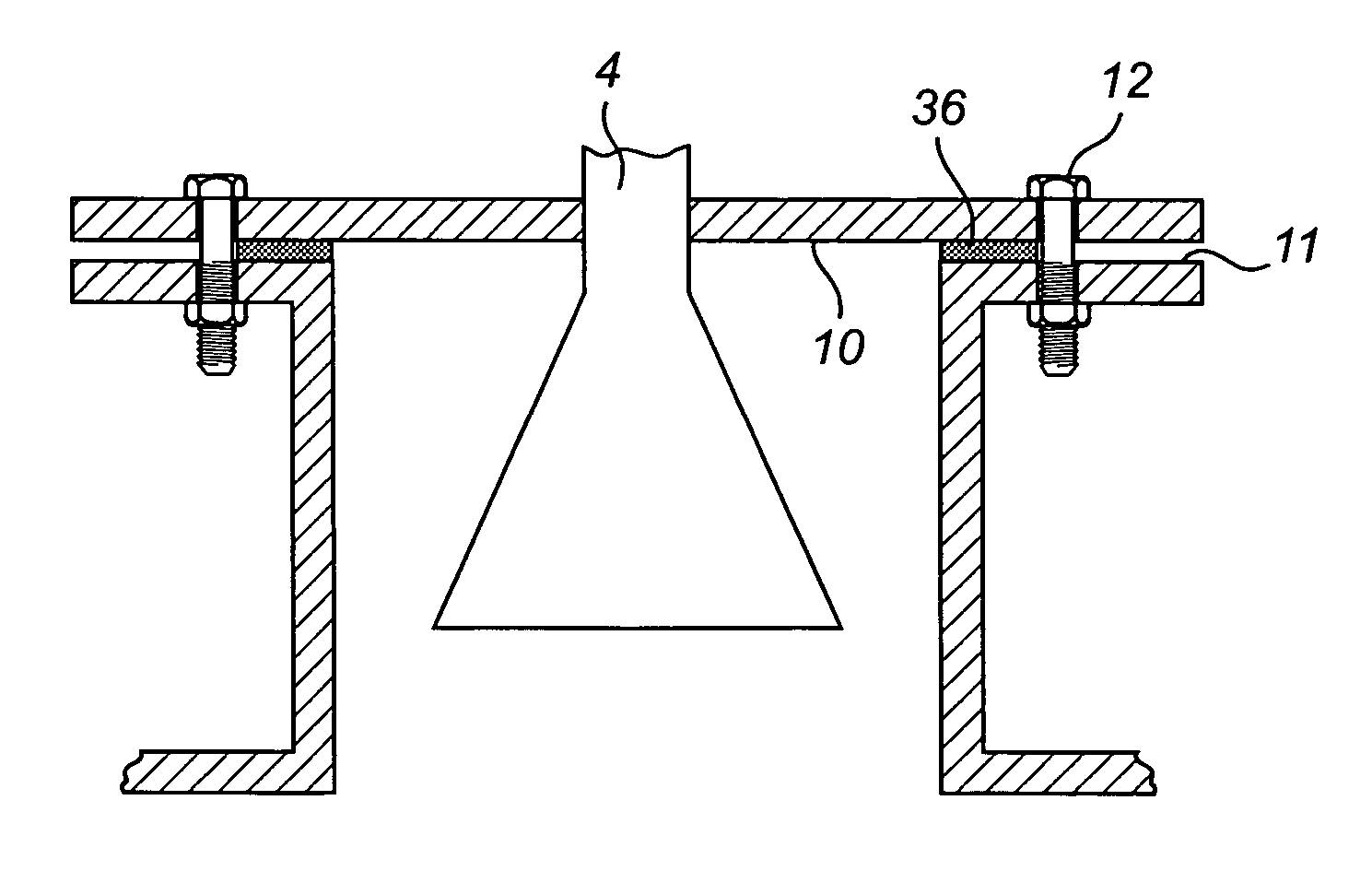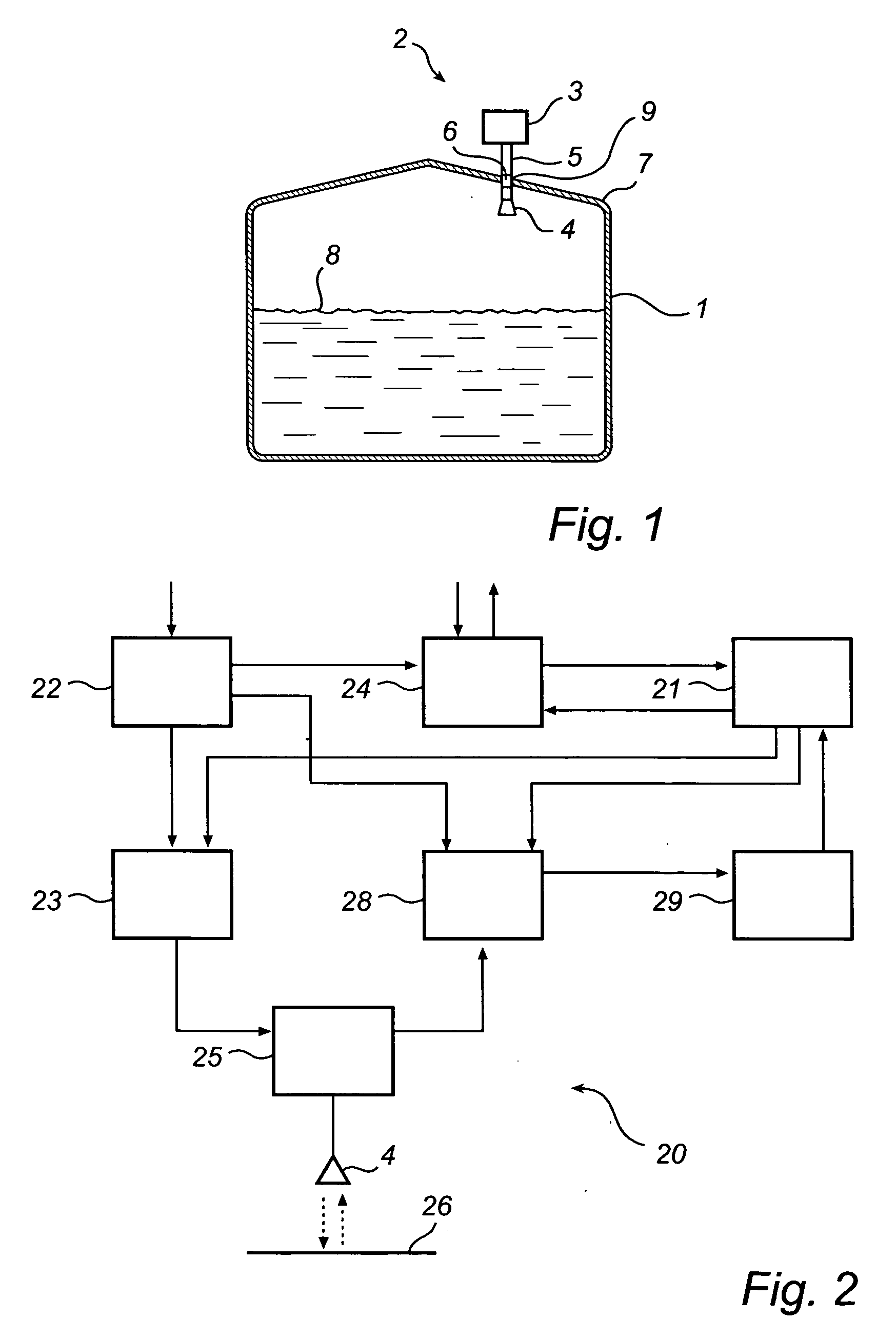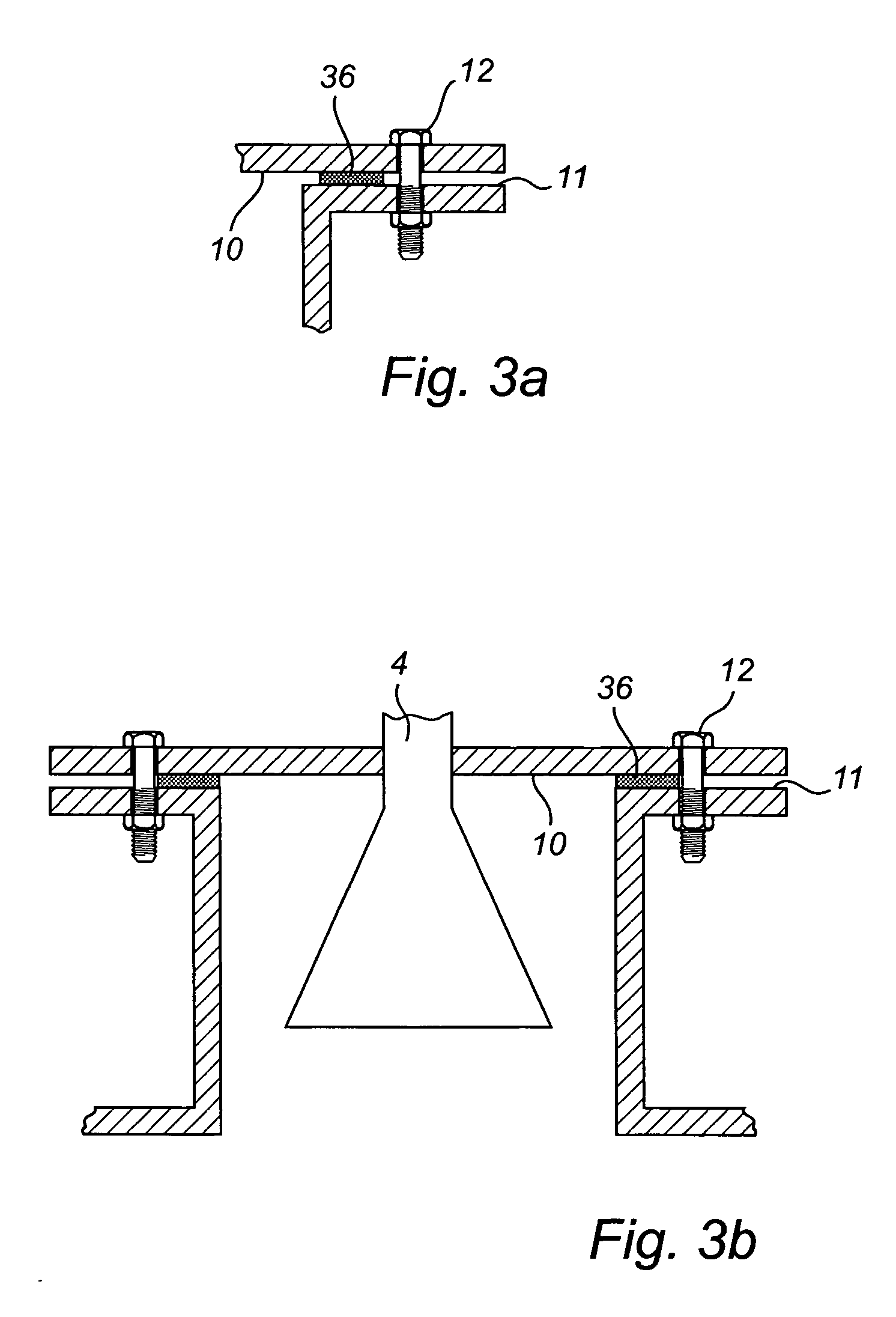Microwave sealing for radar level gauges
- Summary
- Abstract
- Description
- Claims
- Application Information
AI Technical Summary
Benefits of technology
Problems solved by technology
Method used
Image
Examples
Embodiment Construction
[0052]FIG. 1 shows schematically a tank 1 provided with a radar level gauge system 2. In brief, the system in FIG. 1 comprises an electronic unit 3 for transmitting and receiving radar signals and processing the received signals in order to determine the level in the tank, an antenna 4 arranged inside the tank for transmitting and receiving radar waves into the tank, and a radar wave guide assembly 5 for guiding signals between the electronic unit 3 and the antenna 4. In order to maintain temperature and pressure in the tank, and to protect the outside environment from the tank contents, a wave guide sealing 6 is arranged close to where the wave guide 5 passes through the tank wall 7 to provide sealing of the tank 1. The same antenna could preferably be used both as a transmitter for emitting the output radiation and as a receiver for receiving the reflected echo signal, even though it is also possible to use separate antennas for these functions.
[0053] In use, the radar level gaug...
PUM
 Login to View More
Login to View More Abstract
Description
Claims
Application Information
 Login to View More
Login to View More - R&D
- Intellectual Property
- Life Sciences
- Materials
- Tech Scout
- Unparalleled Data Quality
- Higher Quality Content
- 60% Fewer Hallucinations
Browse by: Latest US Patents, China's latest patents, Technical Efficacy Thesaurus, Application Domain, Technology Topic, Popular Technical Reports.
© 2025 PatSnap. All rights reserved.Legal|Privacy policy|Modern Slavery Act Transparency Statement|Sitemap|About US| Contact US: help@patsnap.com



